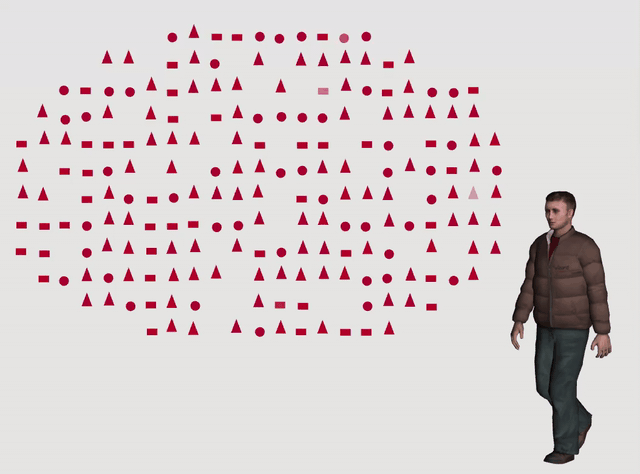Our new preprint is now available on bioRxiv. We designed a quantity space that allowed participants to physically interact with abstract knowledge.
In the field of embodied learning, physical exploration of a concept is known to facilitate learning. In parallel, cognitive spaces have been proposed to organize different types of knowledge in a spatial format. One idea is that abstract knowledge acquisition could be enhanced by using learning techniques similar to those used when navigating the physical world. We explore this theory by creating an immersive virtual reality paradigm where participants explore an abstract space through a first-person perspective.
D Kuhrt+, NR St. John+, JLS Bellmund‡, R Kaplan‡, CF Doeller‡ (2020). An immersive first-person navigation task for abstract knowledge acquisition. bioRxiv.
#: these authors contributed equally to this work
‡: these authors jointly supervised this work
Abstract
Advances in virtual reality (VR) technology have greatly benefited spatial navigation research. By presenting space in a controlled manner, changing aspects of the environment one at a time or manipulating the gain from different sensory inputs, the mechanisms underlying behaviour can be investigated. In parallel, a growing body of evidence suggests that the processes involved in spatial navigation extend to non-spatial domains. Here, we leverage VR technology advances to test whether participants can navigate abstract knowledge. We designed a two-dimensional quantity space – presented using a head-mounted display – to test if participants can navigate abstract knowledge using a first-person perspective navigation paradigm. To investigate the effect of physical movement, we divided participants into two groups: one walking and rotating on a motion platform, the other group using a gamepad to move through the abstract space. We found that both groups learned to navigate using a first-person perspective and formed accurate representations of the abstract space. Interestingly, exploratory behaviour in the abstract space resembled behavioural patterns observed in spatial navigation studies. Notably, both groups demonstrated similar patterns of learning. Taken together, these results imply that both self-movement and remote exploration can be used to learn the relational mapping between abstract, non-spatial stimuli.

Quantity space – do you know where you are?
